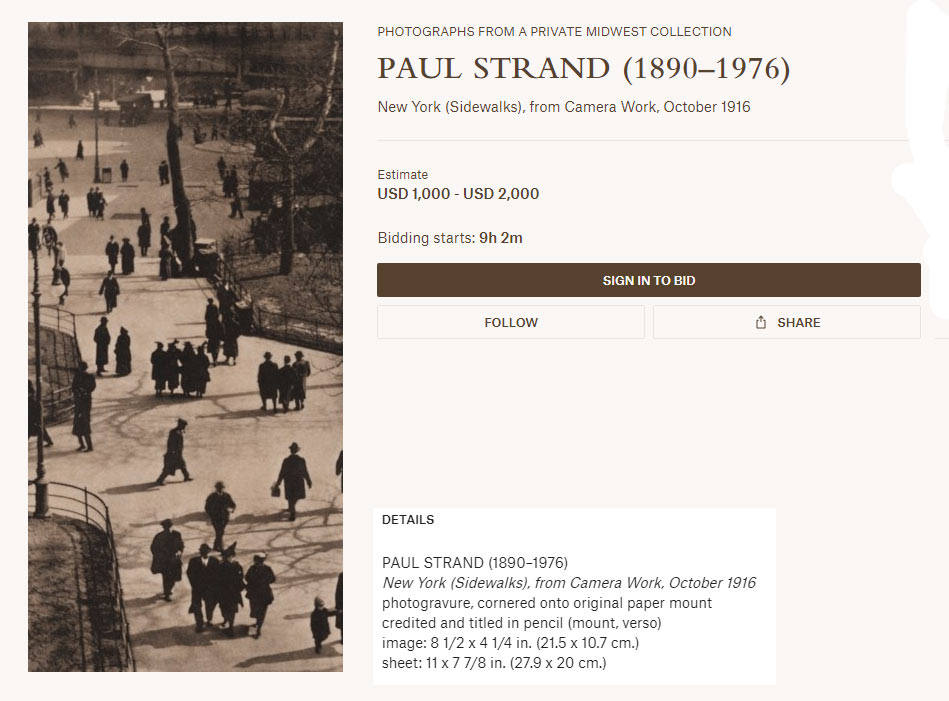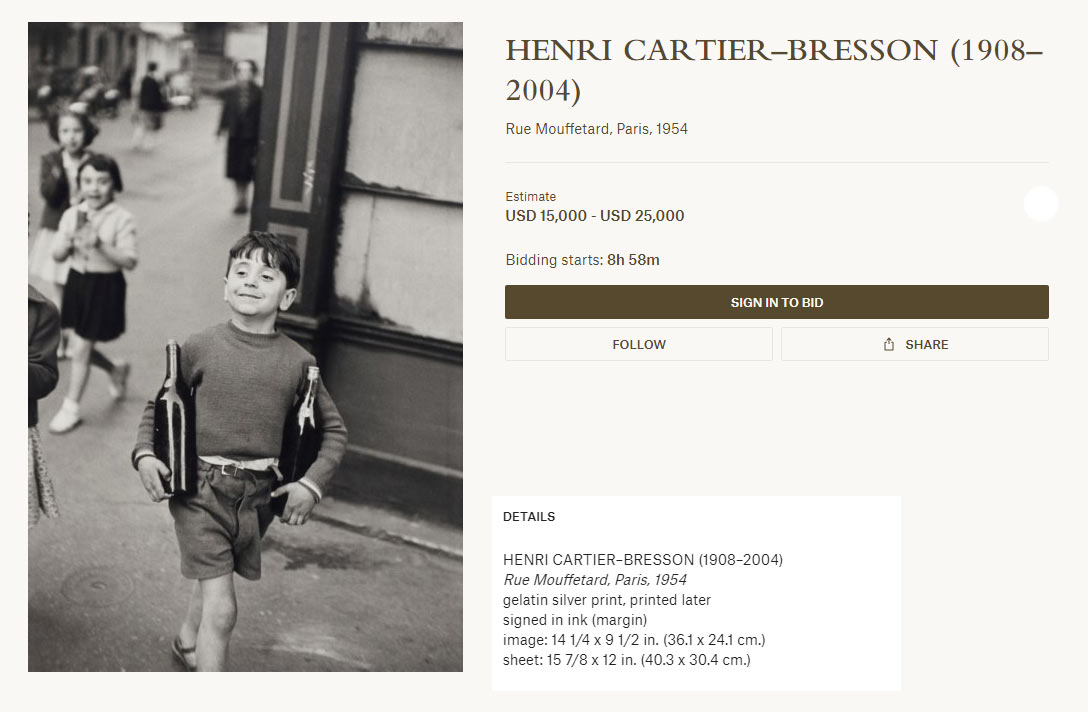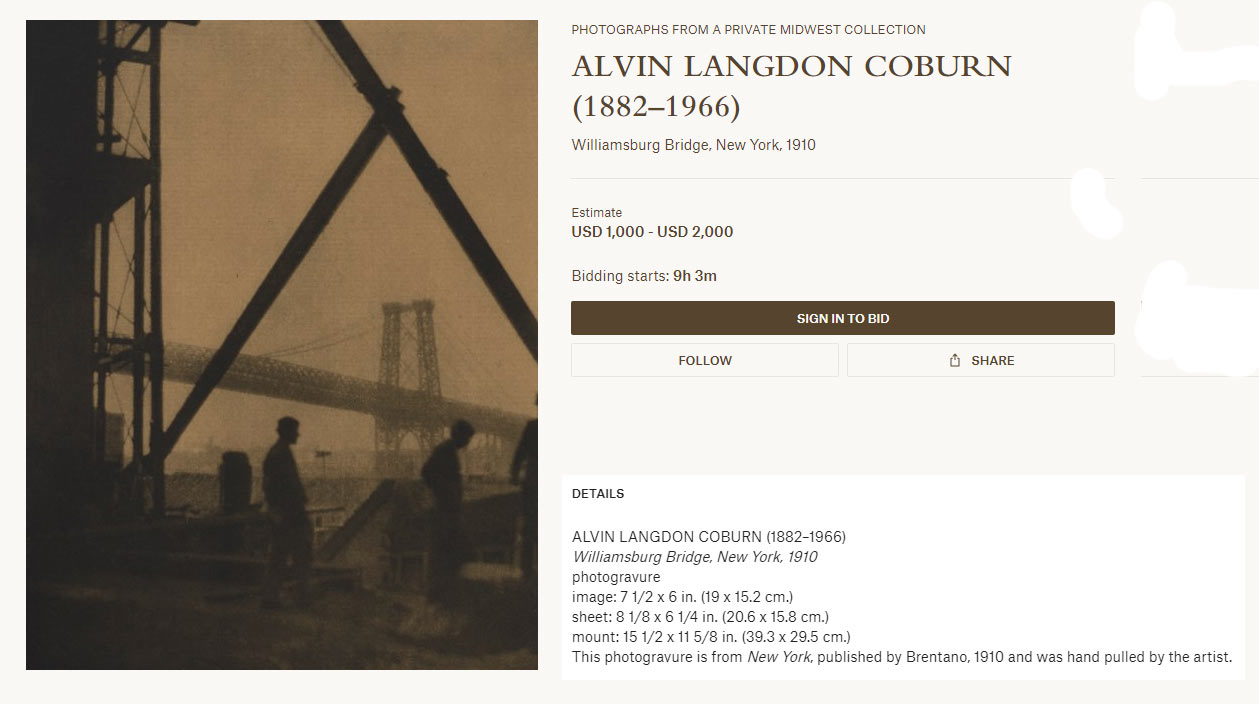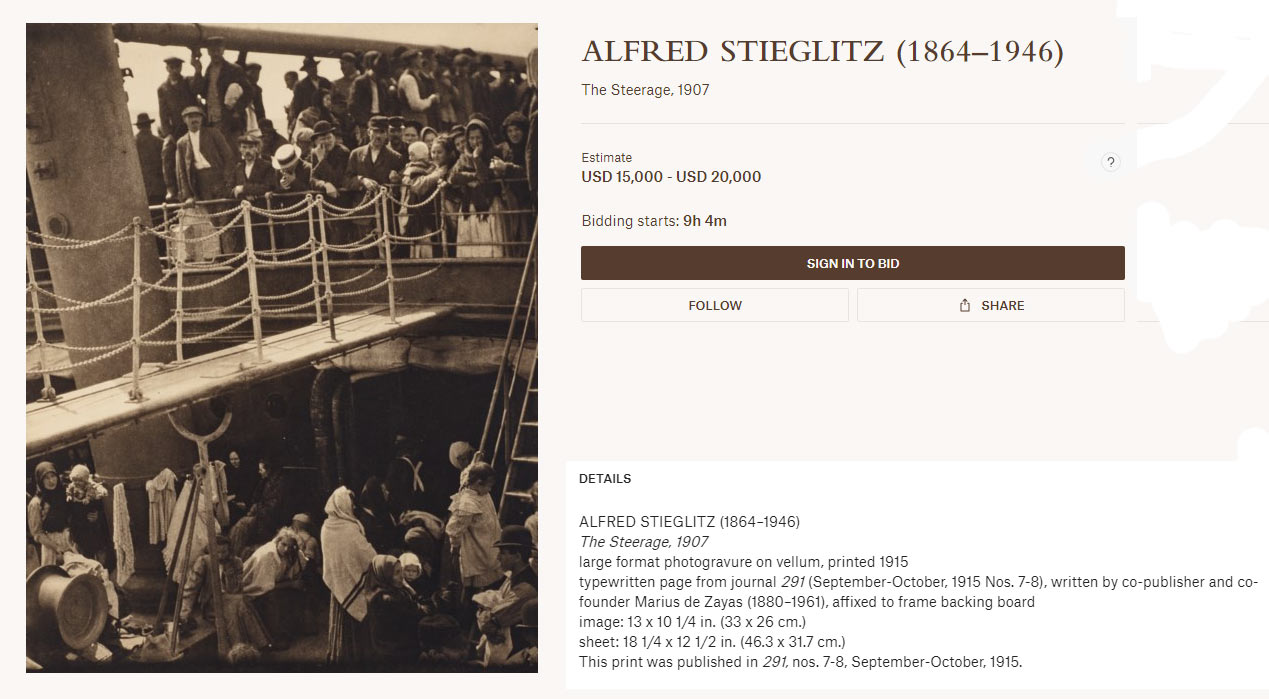
Buying Photographic Prints
Thoughts on the Market for Photographs
Have you ever noticed how few photographs you see hanging in peoples homes as art? There are lots of family pictures but seldom do you see a photographic print hung simply as art to be enjoyed. You see prints of family, pets, or mountains, sometimes airplanes Often you see cheap oil paintings or copies of them that have been turned out in their thousands. But you see very few original photographic prints, especially of any quality.
But there is a market for old photographs. I always knew there was but I have never really looked closely at it. At least until now. I came upon a sale of original prints by very old famous photographers and I was surprised by the amount of money these could sell for. This week Christie’s Auction House of New York is having an auction of original prints from March 31st to April 13th which got me on this train of thought.
Some of the prints being offered for sale are by some of the most famous photographers from the early days of photography. Each auction lot is illustrated, there is a description of the print, and most interesting of all, there is an estimate of the value. That was an eye opener!
I have copied several of these listings, chosen at random, and I am posting them them to illustrate my thinking. Everything is from Christie’s website, somewhat rearranged for brevity.
So, let’s look at this picture by Paul Strand. For me, it is low contrast, has very poor tonal range and it looks like is is fogged. A problem with darkroom prints is that they do not age well, especially if they have been exposed to light for years or were never properly washed to rid them of residual chemicals, or both. And on top of this, I don’t think this image will touch anyone emotionally. It is rather bland. And look at the estimated value! Now, hold that thought.
Now this print of a winter scene by the American classic photographer Alfred Stieglitz is interesting. For example, the size: 3 5/8th by 5 5/8th inches. Probably a contact print. So it is very small. And again, it is faded, of low contrast but at least the subject matter is more appealing. But of most interest is the estimated value! They are estimating this postage stamp sized picture at between 15,000 and 20,000 USD. But exactly what is someone buying for that price?
I understand the prices but I don’t get exactly what it is that is being purchased. It is certainly not art that one would mount on the wall. It might be put on the wall, for sure, but would it be considered “art”?
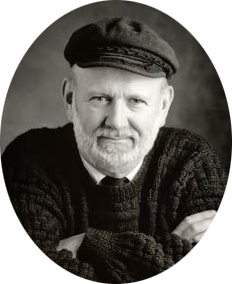
This portrait by Imogen Cunningham, an American phographer, taken in 1908 is 4 1/2 by 3 inches in size. And it is faded almost to the point of being illegible. So why is it estimated to be worth between 4,000 and 6,000 USD?
In the condition it is here it certainly cannot be considered art. So the mystery continues. One factor to take into account is that these are photographers who have passed on so they will be making no more prints. And in their day to make prints was a much more involved process than it is today and so there were fewer prints in circulation than is common now.
It is a well known economic principle that scarcity drives prices. You know, the old “supply and demand” thing. Well, we see that supply is certainly restricted. But what about demand. Why are people buying photographs that are not technically very good?
The fact is that the photographs are by photographers who played a major role in the development of modern photography. They are historically important to the history of our craft. So much so that to own a print by one of them gives one status, it gives one an important historical artifact, it is collectible. There is the explaination for the demand: collectability.
I collect cameras but they are not art. Others collect firearms, some collect dolls, even matchbook covers. But they are not art. Still, there are those who will pay large sums to acquire these items, none of which are art. At least here the objects of desire can aspire to be art.
If an object is being acquired as a collectible the process of evaluation is very different than one being aquired as a work of art. When I buy another firearm for my collection aesthetics plays very little part in evaluating it. It is all about condition, historical significance, and the hole in the collection that is to be filled. Many of those factors come into play buying some of these prints. That is why even prints that are faded and not attractive as works of art are still sought after.
In particular, the history of the print plays a role. The image “The Steerage” by Stieglitz taken in 1907 is a famous image and appears in almost every book about early photography. And this fame is reflected in the price. This print in your cellection will establish your credentials as a collector for sure.
But what if the print actually has value as a work of art in addition to being collectible? What if it is truly of a size and subject that evokes an emotional response? This adds a layer of complexity to the evaluation. For instance, look at Ansel Adams print of Mount Williamson taken in 1944. It is certainly desirable for a collection of photography. Of that there is no doubt. But this print is 14 by17 1/2 inches and would look gorgeous framed and it would add richness to any room.
That said, there are lots of fantastic prints available by largely unknown photographers for a few hundred dollars or even less. So why does this attract the price it does? It is because of the fame of the photographer and his place in photographic history and the limited number of fine examples of this print,in addition to the beauty of the subject, that gives rise to the price.
They don’t even want your bid if it is less than 16,000USD and they figure it is worth 20,000 to 30,000 USD! Who says you can’t earn money in photography? But you have to die to do it!
So where does that leave us in our search for art? Well, we have to be careful to differentiate between what is collectible and what is artistic. Both are valid considerations when looking at a print but they are not the same thing and different rules apply when evaluating them.
I love Adams’ picture. It is beautiful, I would like to hang it in my home, I think it is art. However, in evaluating for me, I cannot get out of my mind how many cameras that 20,000 to 30,000 USD would buy. A collector of photography would see it totally differently. When we are talking about discretionary spending, and we are here, value is in the eye of the beholder. So, happy bidding. I will sit this one out.
This website is the work of R. Flynn Marr who is solely responsible for its contents which are subject to his claim of copyright. User Manuals, Brochures and Advertising Materials of Canon and other manufacturers available on this site are subject to the copyright claims and are the property of Canon and other manufacturers and they are offered here for personal use only.

